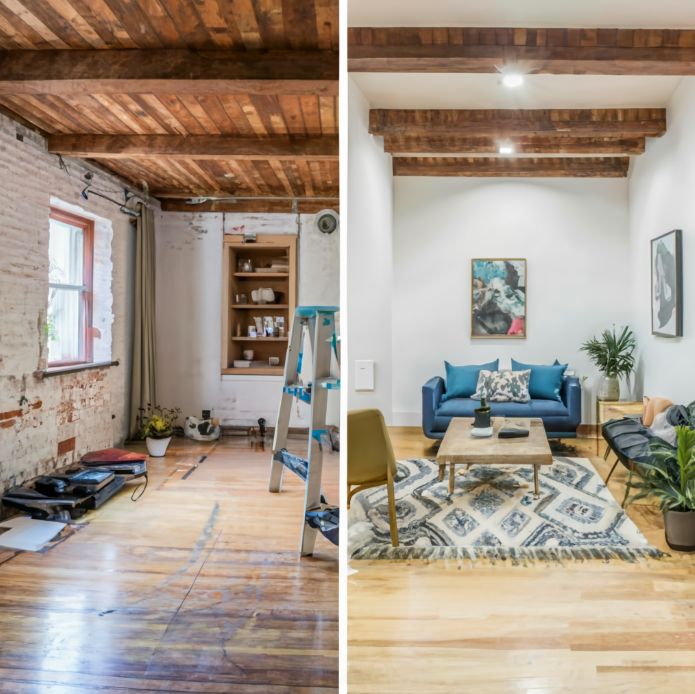A renovation loan is a type of financing specifically designed to fund home improvement projects, allowing homeowners to upgrade, remodel, or repair their properties. Whether you’re renovating your kitchen, updating your bathroom, or adding extra space to your home, a renovation loan can provide the funds you need to turn your renovation dreams into reality. In this guide, we’ll explore the basics of renovation loans, including how they work, the types available, eligibility requirements, and key considerations to keep in mind.

Key Takeaways:
- Understand Your Financing Options:
- Explore the various types of renovation loans available, including personal loans, home equity loans, and HELOCs.
- Compare the features, interest rates, and eligibility requirements of each option to determine which best suits your needs.
- Assess Your Renovation Needs:
- Before applying for a renovation loan, carefully evaluate your renovation project and determine the scope of work.
- Develop a detailed budget and timeline to ensure you borrow the appropriate amount and can repay the loan comfortably.
- Check Your Eligibility:
- Review the eligibility criteria set by lenders, including minimum credit score, income stability, and equity requirements.
- Take steps to improve your creditworthiness if necessary and gather all necessary documentation for the loan application process.
- Compare Lenders and Rates:
- Shop around and compare loan offers from different lenders to find the most competitive rates and terms.
- Consider factors such as interest rates, fees, repayment terms, and customer service when choosing a lender.
- Borrow Responsibly:
- Borrow only what you need and can afford to repay.
- Avoid taking on excessive debt or using your home as collateral unless you’re confident in your ability to make timely payments.
- Plan for Repayment:
- Develop a repayment plan that aligns with your budget and financial goals.
- Make timely payments to avoid penalties and maintain a positive credit history.
- Stay Organized:
- Keep track of your renovation expenses and loan documents to ensure a smooth borrowing and repayment process.
- Maintain open communication with your lender and contractor throughout the renovation project.
- Monitor Your Progress:
- Regularly review your renovation project’s progress and budget to identify any potential issues or cost overruns.
- Make adjustments as needed to stay on track and avoid surprises

Key Components of Renovation Loans:
- How Renovation Loans Work: Renovation loans are typically offered by banks, financial institutions, or specialized lenders. These loans can be used to cover a variety of renovation expenses, including materials, labor costs, contractor fees, and permits. The loan amount is based on factors such as the scope of the renovation project, the estimated cost, and the borrower’s creditworthiness.
- Types of Renovation Loans: There are several types of renovation loans available to homeowners, each with its own features and eligibility criteria. Common types of renovation loans include:
-
- Personal Loans: Unsecured personal loans can be used for home renovations and offer flexibility in terms of loan amounts and repayment terms. However, interest rates may be higher compared to secured loans.
- Home Equity Loans: Home equity loans allow homeowners to borrow against the equity in their property. These loans typically offer lower interest rates and higher loan amounts but require the borrower to use their home as collateral.
- Home Equity Lines of Credit (HELOCs): HELOCs provide homeowners with a line of credit that can be used for home renovations. Borrowers can withdraw funds as needed, up to a predetermined credit limit, and only pay interest on the amount borrowed.
- Eligibility Requirements: Eligibility requirements for renovation loans vary depending on the type of loan and the lender. Common eligibility criteria may include:
- Minimum credit score
- Stable income and employment history
- Sufficient equity in the property (for home equity loans and HELOCs)
- Debt-to-income ratio within acceptable limits
- Key Considerations: Before applying for a renovation loan, homeowners should consider the following factors:
- Loan Amount and Terms: Determine how much you need to borrow and choose a loan with repayment terms that fit your budget and timeline.
- Interest Rates: Compare interest rates from different lenders to find the most competitive offer. Keep in mind that rates may vary based on factors such as credit score and loan amount.
- Fees and Charges: Consider any upfront fees, closing costs, or ongoing fees associated with the loan.
- Repayment Ability: Assess your ability to repay the loan based on your current financial situation and future income prospects.

Conclusion
Renovation loans offer homeowners a convenient and flexible way to finance home improvement projects. Whether you’re planning a small renovation or a major overhaul, a renovation loan can provide the funds you need to bring your vision to life. By understanding how renovation loans work, exploring the types available, meeting eligibility requirements, and considering key factors, homeowners can make informed decisions and embark on their renovation journey with confidence.


